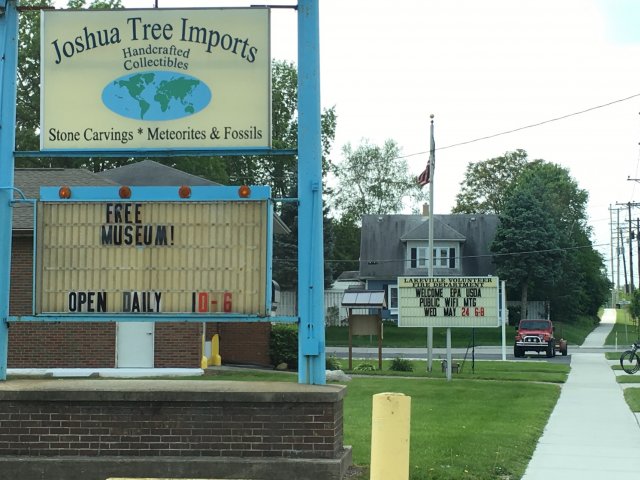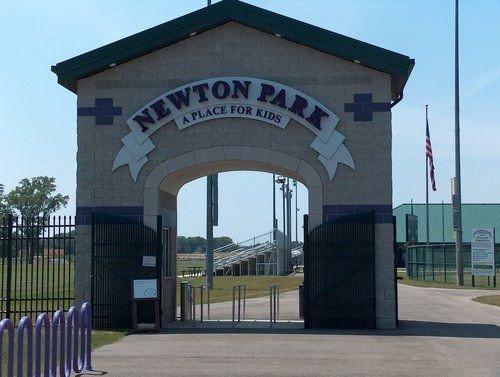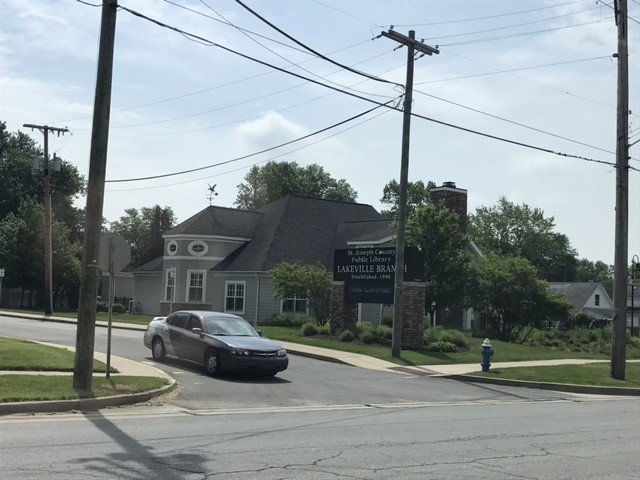Cool & Connected: Lakeville, Indiana

Lakeville is a town of about 800 people in St. Joseph County in northern Indiana, just south of South Bend. Lakeville asked for Cool & Connected assistance to help it spur commercial and economic development while also improving the community and maintaining its small-town charm. The Cool & Connected team of contractors and staff from EPA visited Lakeville in 2017 to conduct a workshop with local officials, business owners, and other community members to develop a vision for the town and next steps to achieve its goals.
Lakeville has many assets, including a high-speed, high-capacity fiber optic cable that runs through the downtown. While the broadband infrastructure exists, as of 2017, it was "dark," or unavailable for residents to use, other than at the local library and one local business.
A streetscape project made the town more walkable; it included sidewalks, curbs, trees, benches, planters, bike racks, and a bike fix-it station. The town of Lakeville also has a large baseball and soccer facility and small lakes that draw visitors. Near Lakeville is the third busiest park in the state, Potato Creek State Park. Lakeville and several local and state partners were also working to create a Wetland Trail and Wetland Community and Education Center on 10 acres next to downtown. The town sought to use this center as an economic driver while also conserving land land to better manage stormwater.

The region has suffered from a steady decline in manufacturing, and the county lost more than 1,000 manufacturing jobs between 2001 and 2008. According to the 2010 U.S. Census, 27 percent of Lakeville’s population lives at or below the poverty level. In 2014, U.S. Route 31, which connects Lakeville to South Bend, was rerouted a mile east of Lakeville’s downtown, dropping traffic counts from 27,000 vehicles a day to 5,400.
Through the workshop, residents and local and regional officials created a vision of Lakeville to become a bedroom community for South Bend, as well as a gateway destination for visitors to Potato Creek State Park. They sought to nurture a distinctive character as a place for people to live, work, play, and pray. Specific goals included creating a coworking space and technical assistance to encourage economic development, creating branded signage to bring visitors to the downtown, developing a social media strategy to promote Lakeville’s small-town charm, providing free public wi-fi downtown, extending Wi-Fi to natural areas, and creating a multi-modal corridor to encourage walking and biking.

After the workshop, Lakeville Downtown District saw many improvements. By late 2017, Lakeville received a $500,000 state grant to help with the planning and funding of an updated Lakeville Fire Rescue Emergency Services Building in the heart of downtown, which will include more community conference space. There was progress on a land purchase to create the wetland park, as well as plans to to turn an existing barn into a community center. The promise of these new amenities attracted development to the Lakeville Commerce Park at the south end of the wetlands. A restaurant and a brewery were planned to open that could eventually leverage the proposed free public Wi-Fi and become community gathering places.
The Lakeville housing market also saw growth, including the construction of five homes built in 2017. The demand for rental housing was very strong, spurred by excellent schools and an inviting town administration. New and improved properties in the Downtown District increased the town’s tax revenue through the tax increment financing district controlled by the Lakeville Redevelopment Committee. These properties include a new gas station, a new dollar store, and an apartment complex that doubled in size, adding 48 units.
After working closely with a broadband access consultant, the Lakeville Redevelopment Committee approved use of tax-increment funds for the nearly $45,000 cost of planning and installation to extend broadband throughout downtown. The next phase was planned to extend broadband to residential neighborhoods.
The county was negotiating with the state highway department to take over the old U.S. Route 31, which would allow the county make the former highway safer for walking and bicycling. Additionally, the town received a Community Crossing Grant for approximately $126,000 from the state department of transportation to repave and preserve several streets.
Lessons Learned
- Linking high-quality, modern broadband service to other place-making initiatives, like enhanced signage and streetscaping, can accelerate main street redevelopment in even the smallest of towns.
- Outdoor recreation opportunities (e.g., parks and wetlands), good broadband service, and a charming downtown can attract visitors and retain young people.
- It takes only a few committed local leaders with a vision for revitalizing a town to make changes that result in better quality of life and a healthier environment.
Published October 2020.
